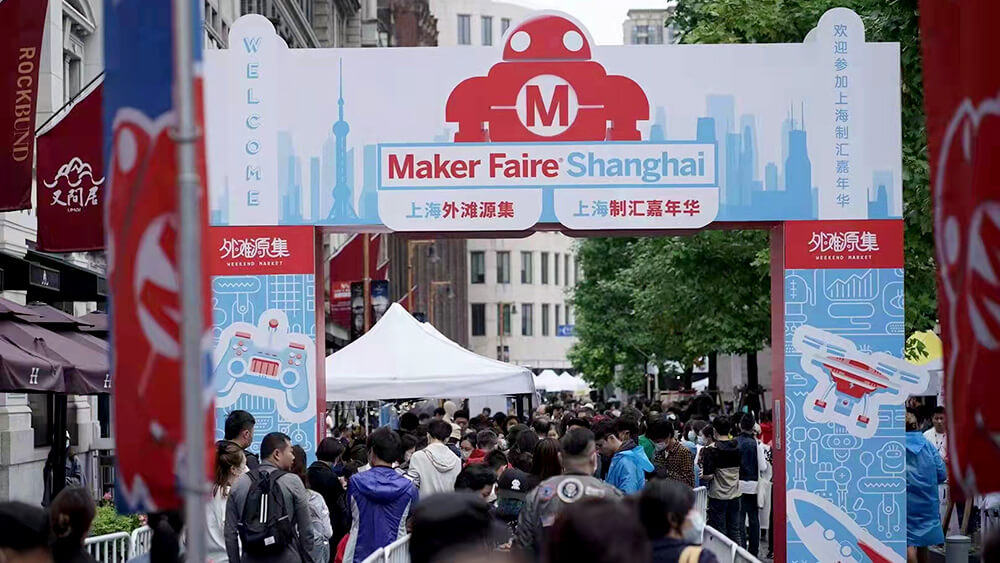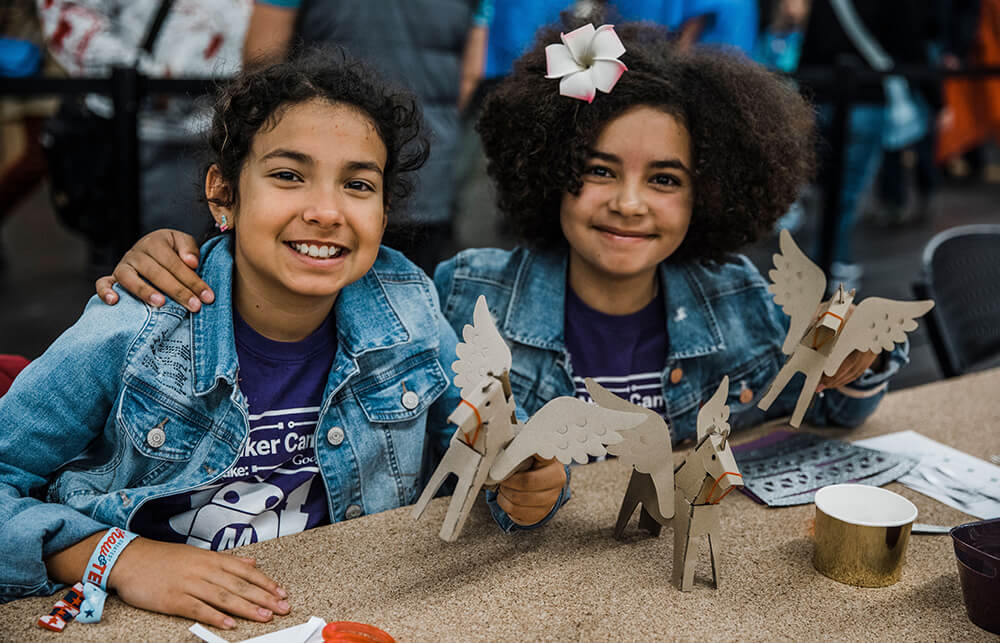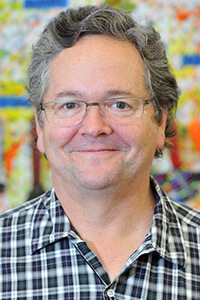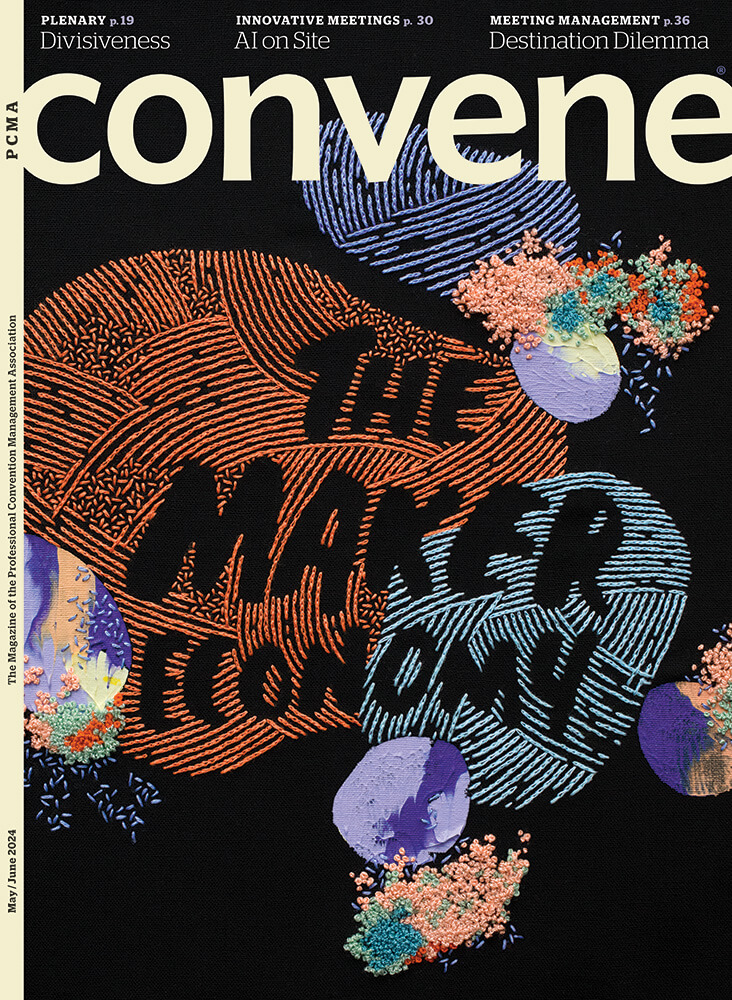
Maker Faire Shanghai is one of hundreds of Maker Faires that take place around the globe each year. (Photos courtesy of Make.Co)
Dale Dougherty started noticing “all these people doing cool projects” in the early 2000s, he told Convene. “I was just fascinated by them. They were so interested in the work they were doing, their projects.” Leveraging his background in publishing and technical writing, Dougherty launched Make: Magazine to break down “those cool projects” for readers. He founded and is president of Make: Community, which, according to its website, has been at the heart of the maker movement — celebrating everyone from tech enthusiasts to crafters to homesteaders to scientists to garage tinkerers — since 2005.
That was the year he started publishing the magazine; the following year, Dougherty planned the first Maker Faire, held in San Mateo, California. The fair was intended to be a place for makers to showcase their projects and have a conversation with attendees about them, even though he said he had “no idea whether the public would be interested” in such an event. Unlike a traditional craft fair, the buying and selling of items was not the objective — the makers may not have even had a business goal for their projects, Dougherty said.
“We started reaching out to people who didn’t necessarily use the term ‘maker’ to describe themselves,” he said, using “maker” to refer to the audience in the first issue of Make: Magazine, as “an uber term to connect people who do projects.” It started “catching on as a term people started to use to identify themselves” — these small communities of people who had a shared interest, he said. The projects featured at the first fair were largely electronics or robotics, but also included crafts like lacemaking. The maker and DIY community was starting to flourish at the time, in part because tech was becoming cheaper and easier to use, he said. In the past, you may have needed a degree to create some of the projects, but now it was possible for people to pick up things by themselves, find other people doing it, and share ideas back and forth, he said. “That’s how you get a community going.”

The maker movement, Dale Dougherty said, flips the script for students — it puts them “in the driver’s seat” so that they can tinker and experiment with making things with their own hands, rather than being told what to do.
The Making of the Make Event
Dougherty chose an old fairground for the first event because he said he “liked the vibe of the fair. The idea was to update it: What if, instead of pigs and pies, it was rocks and robots? We put out a call for makers and said, ‘Just bring your project.’ Initially, I think I had to beat the bushes a little bit.”
But the concept — a mix of county/art/crafts/ science fair — caught on. Around 2010, Dougherty’s company wrote a playbook for and began licensing Maker Faires, which started popping up in different parts of the world. There are now hundreds taking place each year all over the world of all sizes — held in rural communities and big cities, including Shanghai, Shenzhen, Tokyo, and Rome, which hosts the largest Maker Faire — planned by different entities. The L.A. Maker Faire, for example, is organized primarily by the Los Angeles Public Library, which has its own team dedicated to the event.
The only Maker Faire that Dougherty is still actively involved in, “the mothership,” is Maker Faire Bay Area, he said. “We did that last October on Mare Island, which is an old naval base” about 23 miles northeast of San Francisco. The 2024 Maker Faire Bay Area will return there Oct. 18-20.
“It’s beautiful, right on the waterfront. I put that one together. That’s been the template that other people can follow,” he said. The Bay Area Maker Faire features hands-on activities for all ages and interests, hundreds of makers sharing their projects, skills, and insights, and talks and demos from top makers.
Maker Faires are also held in schools. Dougherty could immediately see the early events tapped into an unmet need among students of all ages, attracting “lots of kids — I could just see how excited they were by this. They wanted to participate. They wanted to become makers,” he said. He also found that “teachers were coming to Maker Faire looking for creative projects for the kids. They would all say they’re bored in school — kids are not engaged in learning.”
Dougherty champions maker spaces at schools to give students access to tools to create projects, and to spend time practicing the craft of making.
“What makes it hands-on learning is using your physical body as well as your mind. It engages kids — so much of school for them is being told what to do,” he said. “It flips that around so that they’re in the driver’s seat, they get to do things, they get to decide what to learn, what to make. That really enhances their motivation and keeps them focused and engaged.”
Dougherty thinks the need to involve kids in the maker movement has become more acute since the pandemic. “We see the lack of engagement growing, we see problems like absenteeism, and even declining enrollment, because kids aren’t even going to traditional school if they can find an alternative,” he said. “I think kids could really develop the confidence in their own learning ability, understand that they can learn differently than other people and be just as successful. There are no conferences [for educators] promoting passive learning — like put kids in seats and talk to them all day. There’s nobody saying that’s a good idea, yet that predominates. You want to foster their curiosity, and then they begin to figure it out for themselves.”

From the beginning, Dale Dougherty noticed that kids were intrigued by Maker Faires, which started at fairgrounds and now are held in many schools.
Pandemic Effects
One train of thought is that quarantining during COVID reignited the maker movement, that people with more time on their hands turned to new hobbies. While Dougherty finds truth in that, he also thinks that the pandemic “worked against us in many ways.” Key to making is sharing, and that happens best in person, he said. “It’s very much an intentional connection. Usually, things like hobbies — and this could be painting or electronics — once you start talking about it, you meet other people doing it. People who have been doing it for 20 years still welcome people who are just getting started.
“The pandemic shut down all the maker spaces, both in the community and schools and libraries,” he said, each of which responded in different ways.
“One of the things that maker spaces did during the pandemic, which I was very proud to cover, was they became factories for PPE [personal protective equipment] — masks, face shields, and all these other things — because governments couldn’t figure it out. All these communities throughout America and throughout the world — they took designs and set to work making these things and then delivered them to hospitals and doctors and nurses. It was just a great example of the resiliency that comes from having this capacity. These people were not medical people. They didn’t know any of this, but they learned. They asked questions and they figured out they could do it. I think that comes down to a basic confidence that you can figure things out and contribute.”
There’s an overabundance of “stuff ” we buy as consumers, he said. “But as producers, we can make stuff and it means something to us. I think part of being human is to engage in that process.” Dougherty thinks we are at an interesting inflection point: “To what degree does technology impact society and culture and bring change in some great new ways,” but also foster “bad ways of interacting,” specifically on social media, he said.
“I think one of the things that is special about the maker community is it is supportive and generous,” he said, welcoming new things and creative work rather than attacking them, compared to the often “contentious” nature of social media. “That’s one of the things I really cherish about Maker Faire. For those two days, we’re doing it — you just feel like the vibe is there that everybody’s just happy, open, engaged, welcoming. They’re not walking around like critics or unhappy consumers. They’re like, ‘Boy, I’m participating. This experience is wonderful.’ It really does bring out the best in me and my peers.”
‘Everybody’s Creative, but We Don’t Think We Are’
Not surprisingly, Make Community’s Dale Dougherty thinks a good way to enhance the in-person experience at all kinds of events is to incorporate the maker movement. That could mean having an off-site activity at a maker space to create something tangible. But in general, he finds collaborative workshops a beneficial departure from event sessions that typically follow a classroom model.

Dale Dougherty
“How do you reach people? Throw up PowerPoints on the wall and talk all day long? How much do people walk away with?” Dougherty said. “What matters is what peers do in a group. Not what you’re doing to them, but what happens when they talk, when they work together.”
When Dougherty sees professionals like teachers working together on a hands-on project, he said he is impressed by how congenial everyone is and the “nice feeling in the room. You’re reaching a side of them that doesn’t often get pulled in. Everybody’s creative, but we don’t think we are. We don’t get reinforcement for that — we don’t try because we worry someone’s going to judge us.”
In the workplace, he said, we are “always being looked at and judged. How do you let people shine in a different way? One of the things I have always thought about for business — and we did some pilots early on, because, when I started this, we had some tech conferences and we did this in the evening — we’d invite people to bring something, a project that they do on their own time. You’d be surprised by what people do, whether it’s their hobby or their side project.”
Giving attendees the opportunity to share hobbies or projects they are passionate about demonstrates that they are not entirely defined by their work or career, he said. Others realize, “Oh, this is a well-rounded person who might be an engineer by day, but they’re building this kid’s entertainment thing or whatever by night. I think that the idea that employees have a life outside of work is a good thing. It’s a way for people to connect to other people in that organization differently.”
Michelle Russell is editor in chief of Convene.
ON THE WEB
Learn more about Make: at make.co and Maker Faire at makerfaire.com.
CMP SERIES CREDIT
Earn one clock hour of certification by visiting the CMP Series page to answer questions about this article and the companion stories below. The Certified Meeting Professional (CMP) is a registered trademark of the Events Industry Council.
- Meetings and the Maker Movement
- How Knoxville Became a Model for Supporting Local Makers
- Discovering Indigenous Culture Through Crafts and Stories
- Artisans Craft Ribbon Into a Unifying ‘Social Fabric’
- Cowbells and Woolen Slippers — Cherished Handmade Gifts From Events
- Making Space for Makers in Portland

